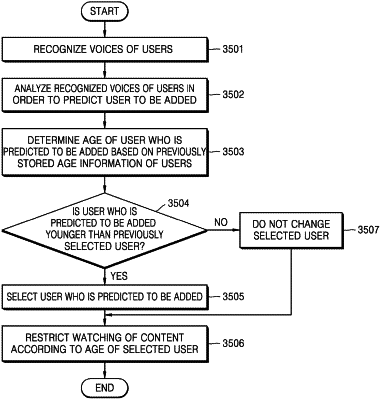| CPC H04N 21/4751 (2013.01) [H04N 21/4182 (2013.01); H04N 21/4223 (2013.01); H04N 21/42201 (2013.01); H04N 21/42203 (2013.01); H04N 21/4415 (2013.01); H04N 21/44218 (2013.01); H04N 21/4532 (2013.01); H04N 21/4542 (2013.01)] | 15 Claims |

|
1. A content playing system comprising:
an output device including a display and a speaker; and
one or more controllers, each including a processor, configured to:
recognize a plurality of users viewing content being output by the output device based on one or more captured images including the users,
receive at least one voice signal including at least one voice of at least one user, via a microphone,
perform voice recognition on the at least one voice signal to recognize content of a conversation of the at least one user,
predict an additional user, not included in the plurality of recognized users, who will be expected to view the content being output, based on analysis of the conversation content to identify information representing the predicted additional user, and
control playing of the content being output according to a youngest age determined by comparing a predicted age of the predicted additional user with ages of the plurality of recognized users,
wherein the at least one user is selected from among the plurality of recognized users and the predicted additional user.
|